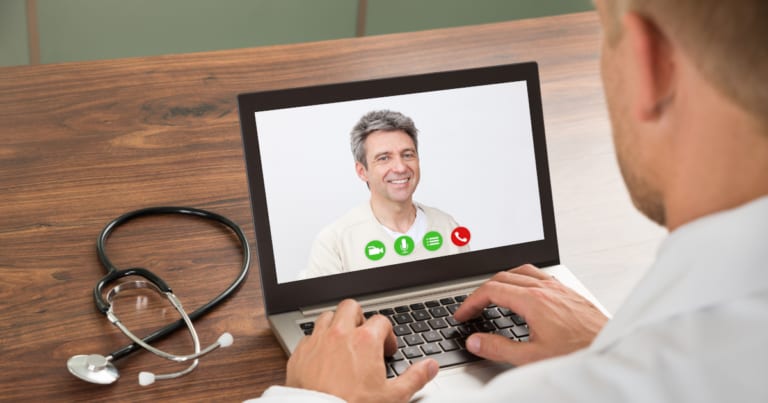When the COVID-19 pandemic hit last year and the government declared a public health emergency (PHE), Medicare coverage of services provided via telehealth were greatly expanded. Several state Medicaid agencies, as well as private payers, also expanded coverage for services delivered via telehealth during the PHE. The PHE has now been extended through at least April 21, 2021, which means that the coverage expansions remain in place and allergists can still use telehealth to provide care to Medicare patients without regard to geographic or originating site restrictions.
A recent communication from the Department of Health and Human Services (HHS) states that it expects the PHE will last through at least 2021 and HHS will provide at least 60 days notice of an end to the PHE.

The College’s Advocacy Council is actively working to ensure the following telehealth policies will be maintained at the conclusion of the PHE either through regulation or legislation:
- Lift geographic limitations for a telehealth visit originating from a rural area.
- Lift the requirement that the patient present at an “originating” site as a condition for payment for a telehealth visit.
- Continue ability to use non-HIPAA compliant audio/video communication tools such as Facetime, Zoom, Go-to-Meeting and other individual-to-individual portals available on smartphones and Apple devices.
- Maintain expanded list of services that can be provided via telehealth. We strongly support the proposal to include the prolonged visit outpatient E/M services on the Medicare telehealth list. This is particularly important now as we work to provide our patients with the care they need, whether it be in the office or via telehealth. However, even without a public health emergency, the ability to provide care remotely, including prolonged services, will become increasingly important in ensuring access to specialty care.
- Maintain authority to conduct telehealth visits using audio only (i.e., traditional telephone). For reasons similar to those stated above, we support the addition of new communication technology-based services (CTBS) codes for longer phone calls than those currently described by the virtual check-in codes. These new codes should be structured and valued to permit phone communications without the requirement that they not lead to an E/M visit within seven days. The classification of these services as CTBS rather than telehealth will also be important in ensuring that they are available to all patients, regardless of geographic location or site of service.
- Continue authority for providers to voluntarily waive Medicare co-pay or deductible for telehealth visits.
- Maintain payment parity between Medicare payments for telehealth visits and in-person visits for the same services.
- Maintain flexibilities regarding direct supervision by physicians in teaching hospitals.
- Allow physicians to provide telehealth visits across state lines without the need to be licensed in the state in which the patient is located.
- Allow a physician to engage in a telehealth visit with established AND new patients.
While the other changes to 2021 Physician Fee Schedule telehealth policies may have little effect on allergy/allergists, the following is a summary of those changes.
The Consolidated 2020 Omnibus Legislation – enacted the end of 2020 – further expands the use of telehealth by:
Providing Medicare coverage for mental telehealth services, regardless of geographic or originating location – provided the physician has seen the patient in the last six months.
- Providing additional funds to the FCC Telehealth programs to improve access.
- Creating grants to improve broadband connectivity directed to tribal governments and infrastructure development in rural areas.
- Providing grants to allow the Department of Veterans Affairs to coordinate rural veterans’ care.
In addition, in the final 2021 Physician Fee Schedule, CMS made some important clarifications related to remote patient monitoring of physiological parameters. Specifically:
- The 20 minutes of time required in the remote patient monitoring (RPM) management codes (99457, 99458) can include both interactive communication as well as non-face-to-face time spent on treatment management.
- For the technical component of RPM codes (99453, 99454), only one practitioner may bill them per patient per 30 days. Therefore, even if multiple devices are used by more than one practitioner, only one practitioner may bill these codes for a given patient.
- CMS has reiterated its position that at least 16 days of data must be collected to bill the RPM technical component and that physiological data must be automatically transmitted and cannot be patient reported.
There remain a number of gray areas related to coding and payment for RPM services, and allergists may want to confer with a consultant or legal counsel to make sure they are in compliance.
We will continue to monitor telehealth policies and advocate for the initiatives most important to you and your patients. The Advocacy Council – we have you covered.



